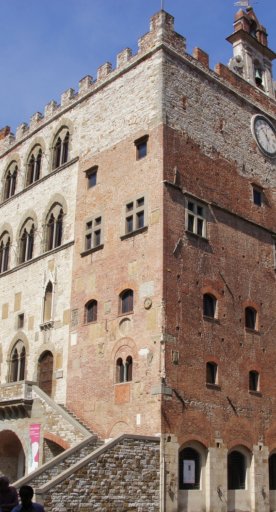Church of Santa Maria della Pietà in Prato
An example of post-Mannerist Florentine architecture
The Church of Santa Maria della Pietà was built in Prato between 1617 and 1620, following a miracle connected to the 14th-century image of the Virgin and Child. The arrival of hordes of worshippers coming to see the extraordinary tabernacle led to the church’s construction, designed by the Grand Duke’s court architect Gherardo Mechini.
The church, built according to the style of the Counter-Reformation, is considered one of the best conserved examples of post-Mannerist Florentine architecture. The interior is accessed through a Tuscan-order porch, where pilgrims once found refuge, and drenched in a well-installed light that directs our attention to the back wall, where the high altar is dominated from above by a large arch. This is where you can find an altarpiece by Mario Balassi from 1638, which juxtaposes well with the fresco at the centre of the wall depicting the miraculous event, attributed to Giovanni Bonsi.
Some other works conserved in the church include paintings from the 1800s by Matteo Bertini and an 18th-century canvas painting of St. Theresa by Gherardini.










